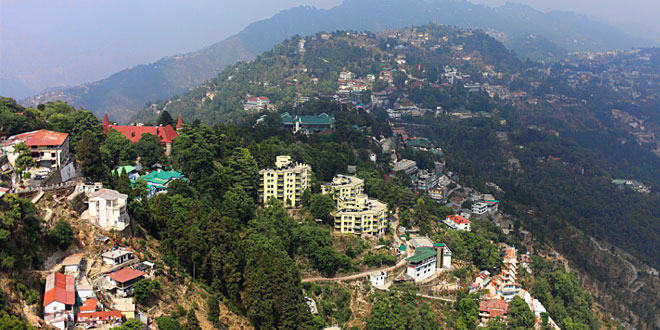Question: Which part of India is called Purvanchal? Mention few characteristics of Purvanchal.
Answer: The Brahmaputra River marks the eastern boundary of the Himalayas. Beyond the Dihang gorge, the Himalayas bend sharply towards south and form the Eastern hills or The Purvanchal.
Following are the characteristics of Purvachal:
- These hills run through the north eastern states of India.
- They are mostly composed of sandstones (i.e. Sedimentary rocks).
- These hills are covered with dense forest.
- These hills are composed of the Patkai Hills, Naga Hills, Manipuri Hills and Mizo Hills.
Question: Explain the Northern Plains of India with its divisions.
Answer: The northern plain of India is formed by three river systems, i.e. the Indus, the Ganga and the Brahmaputra; along with their tributaries. This plain is composed of alluvial soil which has been deposited over millions of years. The total area of the northern plain is about 7 lakh square kilometer. It is about 2400 km long. Width is about 240 to 320 km. Northern plains are most densely populated areas of the country. The plains are very fertile and agriculturally very productive.
The northern plain is divided into three sections, i.e. the Punjab Plains, the Ganga Plains and the Brahmaputra Plains.
- Punjab Plains: The Punjab plains form the western part of the northern plain. This is formed by the Indus and its tributaries; like Jhelum, Chenab, Ravi, Beas and Sutlej. A major portion of these plains is in Pakistan. Doabs are found in Punjab plains.
- Ganga Plains: This plain extends between Ghaggar and Tista rivers. The northern states, Haryana, Delhi, UP, Bihar, part of Jharkhand and West Bengal in the east lie in the Ganga plains.
- Brahmaputra Plains: This plain forms the eastern part of the northern plain and lies in Assam.
Based on the relief features: the northern plain can be divided into four regions, viz. Bhabar, Terai, Bhangar and Khadar.
- Bhabar: After descending from the mountains, the rivers deposit pebbles in a narrow belt. The width of this belt is about 8 to 16 kms. It lies parallel to the Shiwaliks. Bhabhar is the gently-sloping coarse alluvial zone below the Shiwalik Hills (outermost foothills of Himalayas) where streams disappear into permeable sediments. The underground water level is deep in this region.
- Terai: The terai region lies towards south of the bhabar belt. In this region, the streams reappear and make a wet, swampy and marshy region. This region was full of forest and wildlife but after partition all this area was cleared and was converted into agricultural land for the settlement of the migrants.
- Bhangar: Bhangar is the largest part of the northern plain and is composed of the oldest alluvial soil. They lie above the flood plains. They resemble terraces. The soil of this region is locally known as kankar and is composed of calcareous deposits.
- Khadar: The floodplains formed by younger alluvium are called Khadar. The soil in this region is renewed every year and is highly fertile. This region is very suitable for intensive agricultural activities.
 Class Notes NCERT Solutions for CBSE Students
Class Notes NCERT Solutions for CBSE Students



